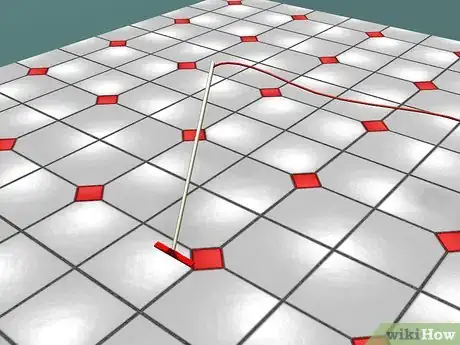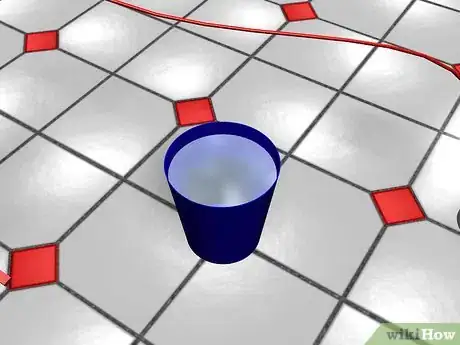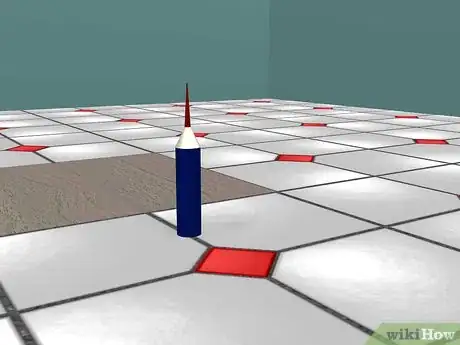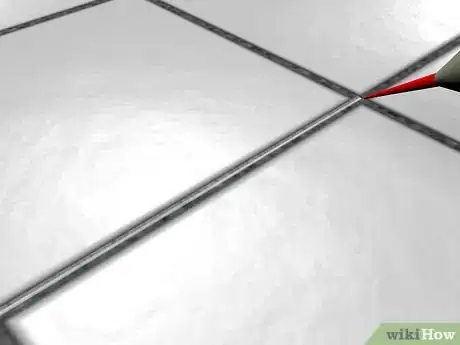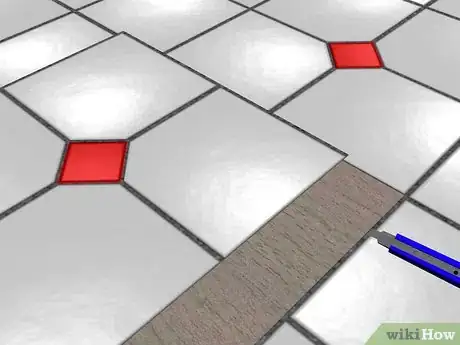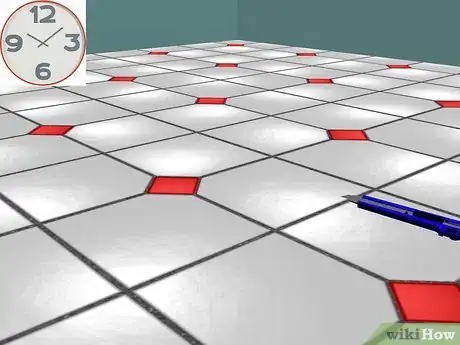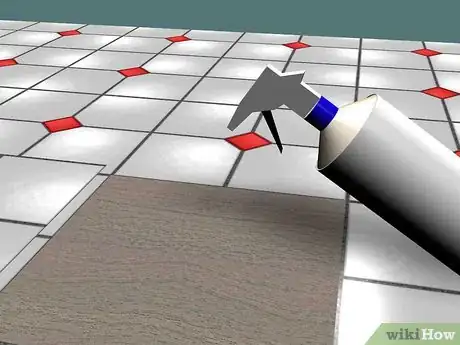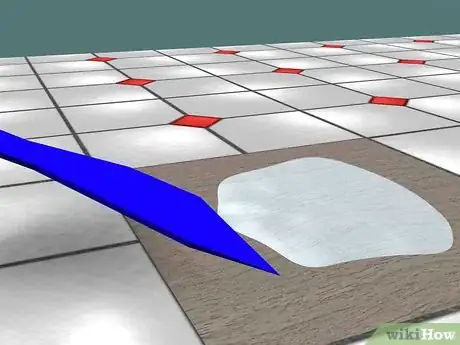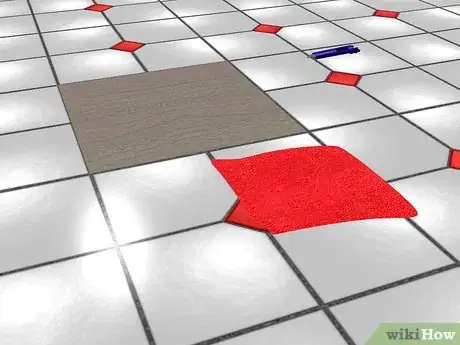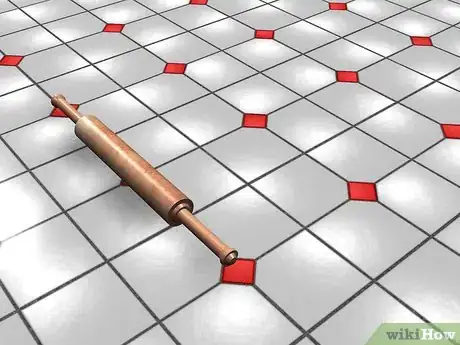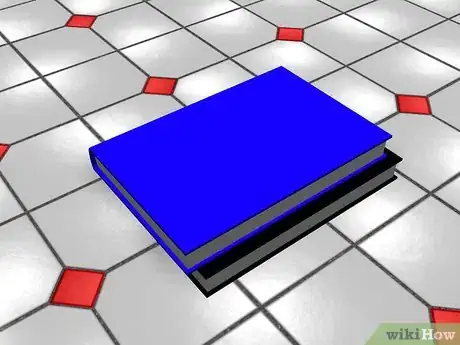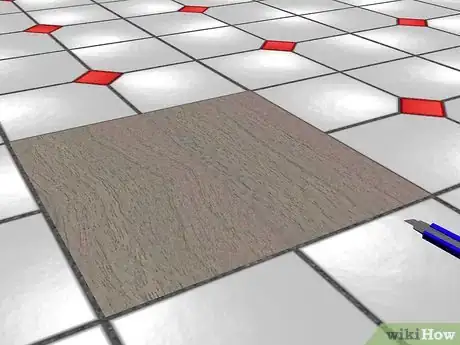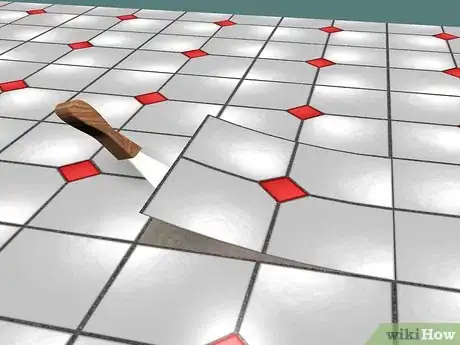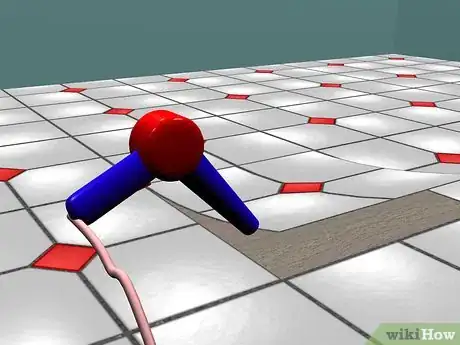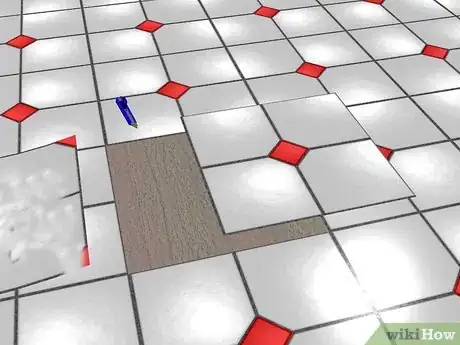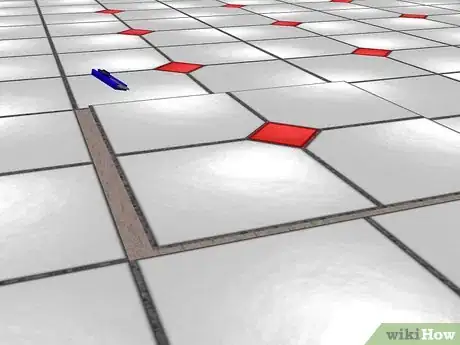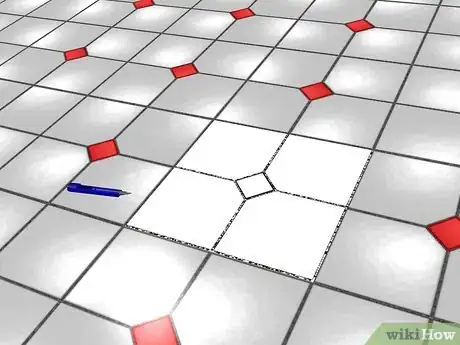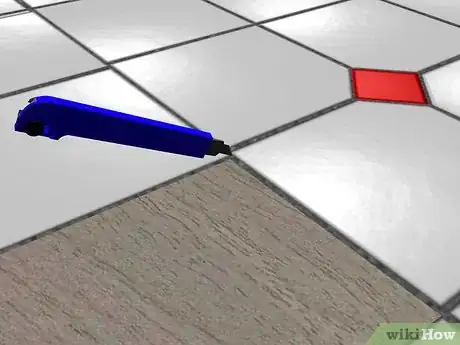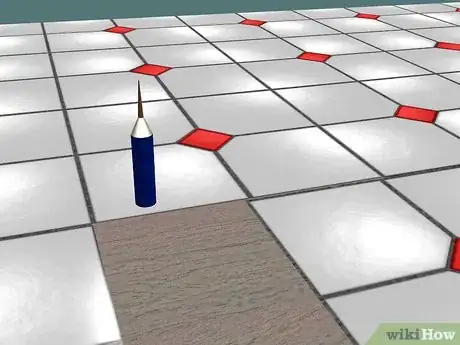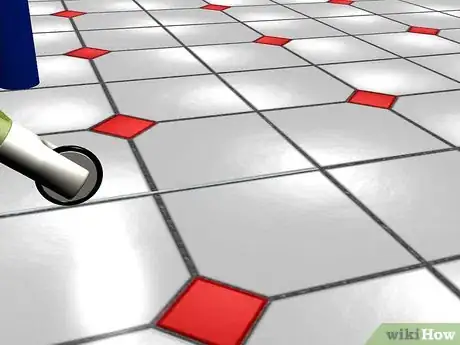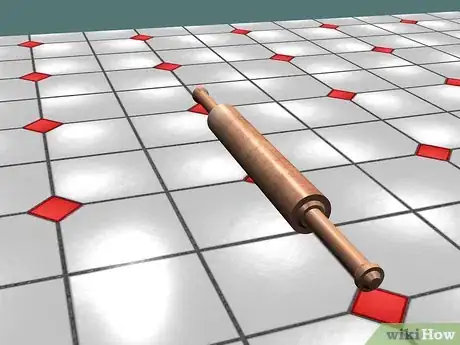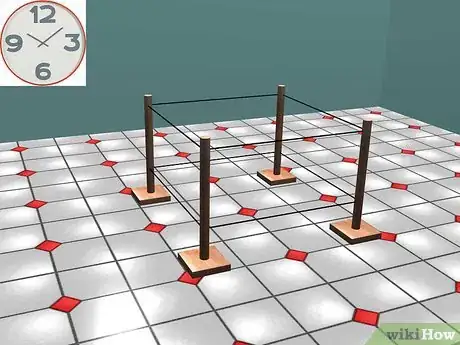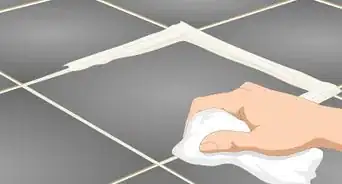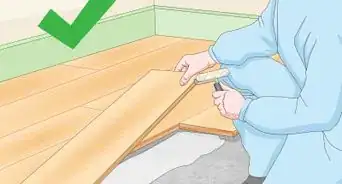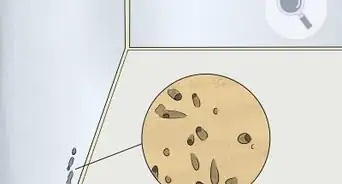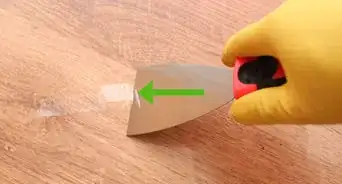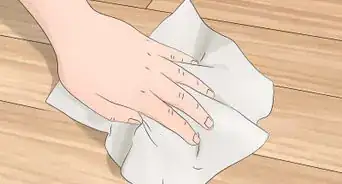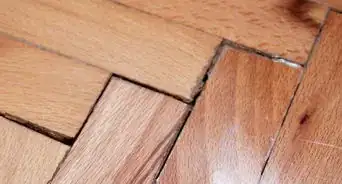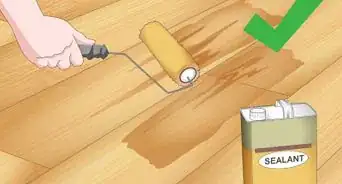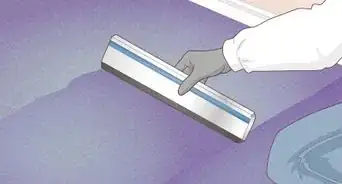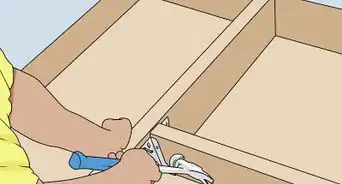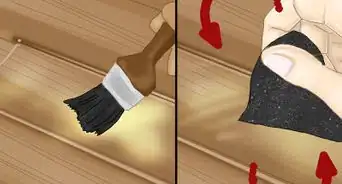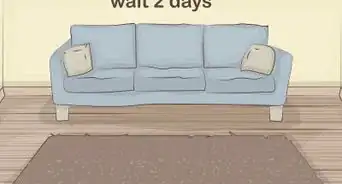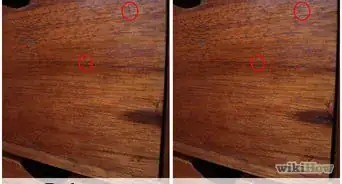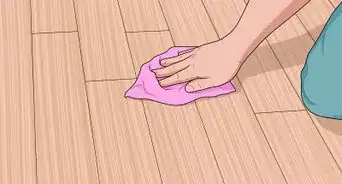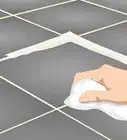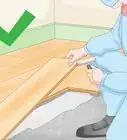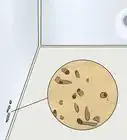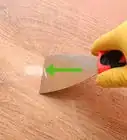wikiHow is a “wiki,” similar to Wikipedia, which means that many of our articles are co-written by multiple authors. To create this article, 13 people, some anonymous, worked to edit and improve it over time.
This article has been viewed 192,670 times.
Learn more...
Sometimes your vinyl flooring can suffer from small cuts or cracks due to normal wear and tear and can even peel up at the corners if the adhesive becomes dry. If your flooring has suffered from water damage, your flooring may bubble up in various different sections. When your vinyl flooring has suffered major rips, tears, or burns that sealants and adhesives won't fix, you may be required to replace the affected sections of your flooring. Regardless of the maintenance needed on your vinyl flooring, there are several ways to perform repairs at home by yourself without necessarily having to hire a contractor to do the work.
Steps
Repair Small Scrapes and Cuts
-
1Use a vacuum cleaner or broom to clear away any existing dirt or debris from the surface of your vinyl flooring where the cut or scrape is located.
- Mop and rinse the damaged area with fresh, warm water if vacuuming or sweeping the area does not remove the dirt.
- Consult the manufacturer of the vinyl flooring for further direction on cleaning products that are safe to use if neither of the vacuuming or mopping methods do not remove all the dirt.
-
2Apply a low-gloss seam sealer or vinyl seam sealant to the scraped or cut areas of the vinyl flooring.[1]
- These products will help fill and seal any scrapes or cuts, preventing the lower layers of the vinyl flooring from deteriorating further.
Repair Bubbles
-
1
-
2Use a squirt bottle or a glue syringe to squirt vinyl floor adhesive into each cut you have produced in the center of each bubble.[2]
-
3Use a tool such as a plastic putty knife to spread the adhesive around evenly beneath each bubble location.
-
4Remove any excess adhesive from outside of the cut in the vinyl flooring using a clean rag.
-
5Use a rolling pin or similar object to roll across the adhesive spots in the vinyl flooring to make it stick to the floor evenly.[3]
-
6Place an object or multiple objects, such as a stack of books, evenly over the entire spot where the adhesive is now located and allow the flooring to dry completely.
- Consult with the directions on the vinyl floor adhesive packaging to determine how long it will take for the adhesive to dry fully.
Replace Flooring Suffering from Major Damages
-
1Use a utility knife with a fresh, sharp blade to make a cut around the tile or section of vinyl flooring you need to replace.[4]
-
2Firmly pry up the damaged flooring section using a putty knife or similar tool without damaging the surrounding flooring.[5]
- If the adhesive is making the vinyl flooring section difficult to remove, aim a hair-dryer at the affected section to loosen the adhesive.
-
3Obtain an extra vinyl flooring replacement tile that matches the damaged tile you removed.[6]
- If your vinyl flooring is made from sheets instead of individual tiles, take the piece you cut from your floor and use it as a template to cut a new piece from a new sheet of flooring.
- If you do not have a matching vinyl flooring tile, you may want to consider removing a tile from a location where mismatched tiles will not be seen; such as underneath your refrigerator or stove, or from the inside of a closet.
-
4Place the new flooring tile or sheet into the empty space in the floor to make sure it fits properly and make any necessary adjustments to its shape using the utility knife.
-
5Apply the indicated amount of vinyl flooring adhesive as directed by the manufacturer to the matching replacement tile and secure it firmly into place.
-
6Apply vinyl seam sealant to any existing open seams that lack adhesive.
-
7Use a rolling pin or hand roller all over the top of the new vinyl flooring to secure it into place and to enforce the adhesive.
-
8Divert all foot traffic away from the replacement section of the vinyl flooring until the adhesive has completely dried.
Community Q&A
-
QuestionIs there a way to make a new plank look worn in so it matches the rest of the flooring?
 Community AnswerYes. You can distress a floorboard with sandpaper, though it may be an opportunity to re-varnish or re-wax the entire floor, if it is in poor condition.
Community AnswerYes. You can distress a floorboard with sandpaper, though it may be an opportunity to re-varnish or re-wax the entire floor, if it is in poor condition. -
QuestionIf I used a caulking to fill deeper cuts, do I need to put the seam sealer on the top before using a polishing wax finish?
 Community AnswerIf you are trying to fill a deeper cut, start by grouting into the groove. Wait fir the grout to dry. Then simply add the caulking on top. For a small but deep hole you could even use wood glue first in the same way as the grout. The point is to not let it sag after you have prepped for your wax finish and cover up.
Community AnswerIf you are trying to fill a deeper cut, start by grouting into the groove. Wait fir the grout to dry. Then simply add the caulking on top. For a small but deep hole you could even use wood glue first in the same way as the grout. The point is to not let it sag after you have prepped for your wax finish and cover up.
Things You'll Need
- Vacuum cleaner or broom
- Utility knife
- Vinyl seam sealant
- Squirt bottle
- Vinyl floor adhesive
- Plastic putty knife
- Cleaning rag
- Rolling pin
- Vinyl replacement tile or flooring sheet
References
- ↑ https://homerepairgeek.com/home-flooring/vinyl-floor-repair.html
- ↑ https://living.thebump.com/remove-air-bubbles-under-vinyl-flooring-10801.html
- ↑ https://living.thebump.com/remove-air-bubbles-under-vinyl-flooring-10801.html
- ↑ https://www.thisoldhouse.com/how-to/fast-fixes-vinyl-floors
- ↑ https://homerepairgeek.com/home-flooring/vinyl-floor-repair.html
- ↑ https://www.thisoldhouse.com/how-to/fast-fixes-vinyl-floors
About This Article
Repairing vinyl flooring is a quick way to fix your tiles without redoing your flooring. If you have small scrapes or cuts in your vinyl, apply a low-gloss seam sealer to seal them up. If you have vinyl bubbles, use a utility knife to make a cut straight down the length of each bubble. Then, spray vinyl flood adhesive into each cut and spread it around with a putty knife. To make sure it dries flat, use a rolling pin to smooth the vinyl out, then place some heavy books on top of it until its dry. For heavily-damaged floors, use a putty knife to pry up the damaged vinyl pieces. Then, cut new vinyl to the shape you need, apply some vinyl adhesive to the floor, and place the vinyl down. Use a rolling pin to remove any bubbles and avoid walking on it until the glue has completely dried. To learn how to fix vinyl corners that keep coming up, read on!
